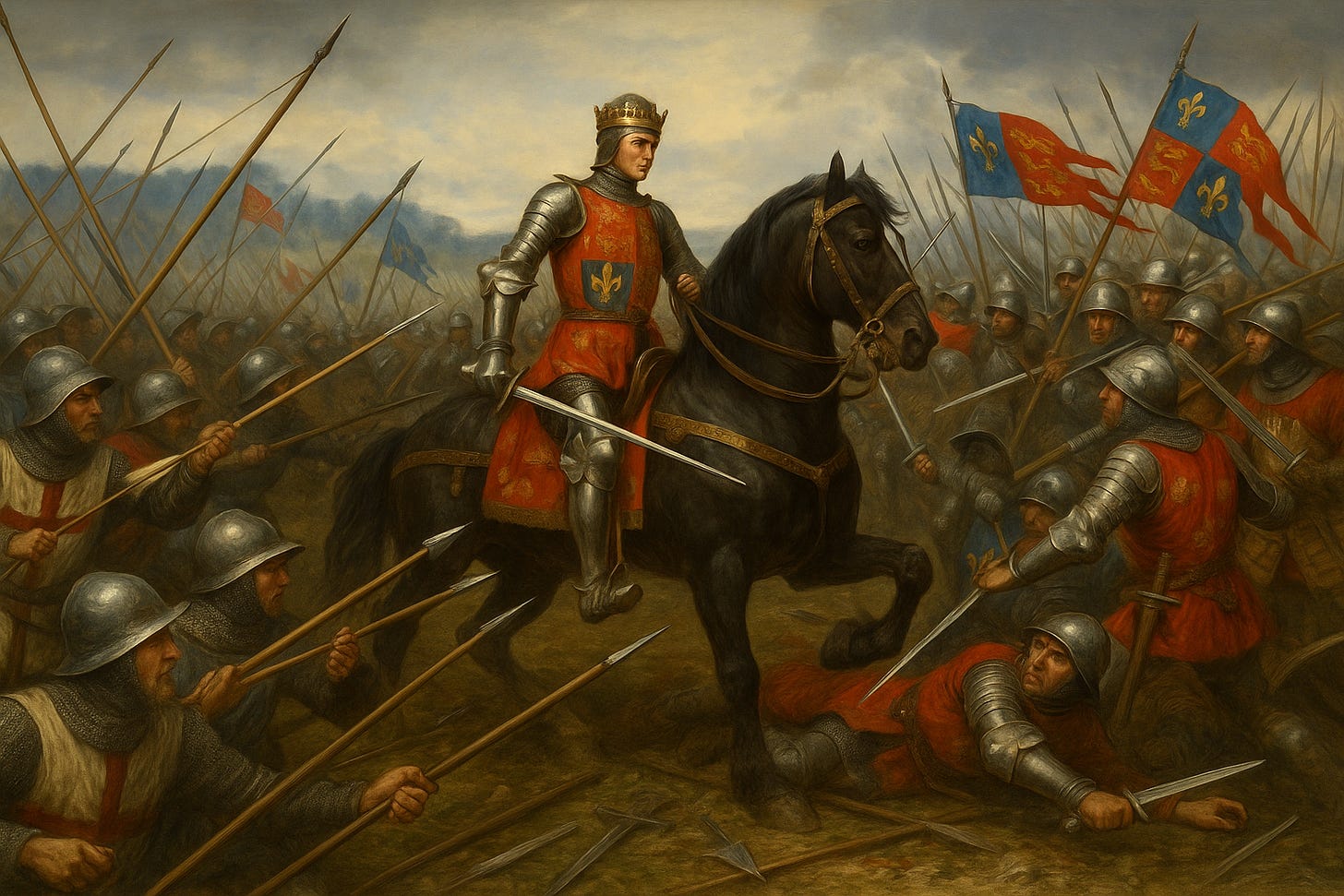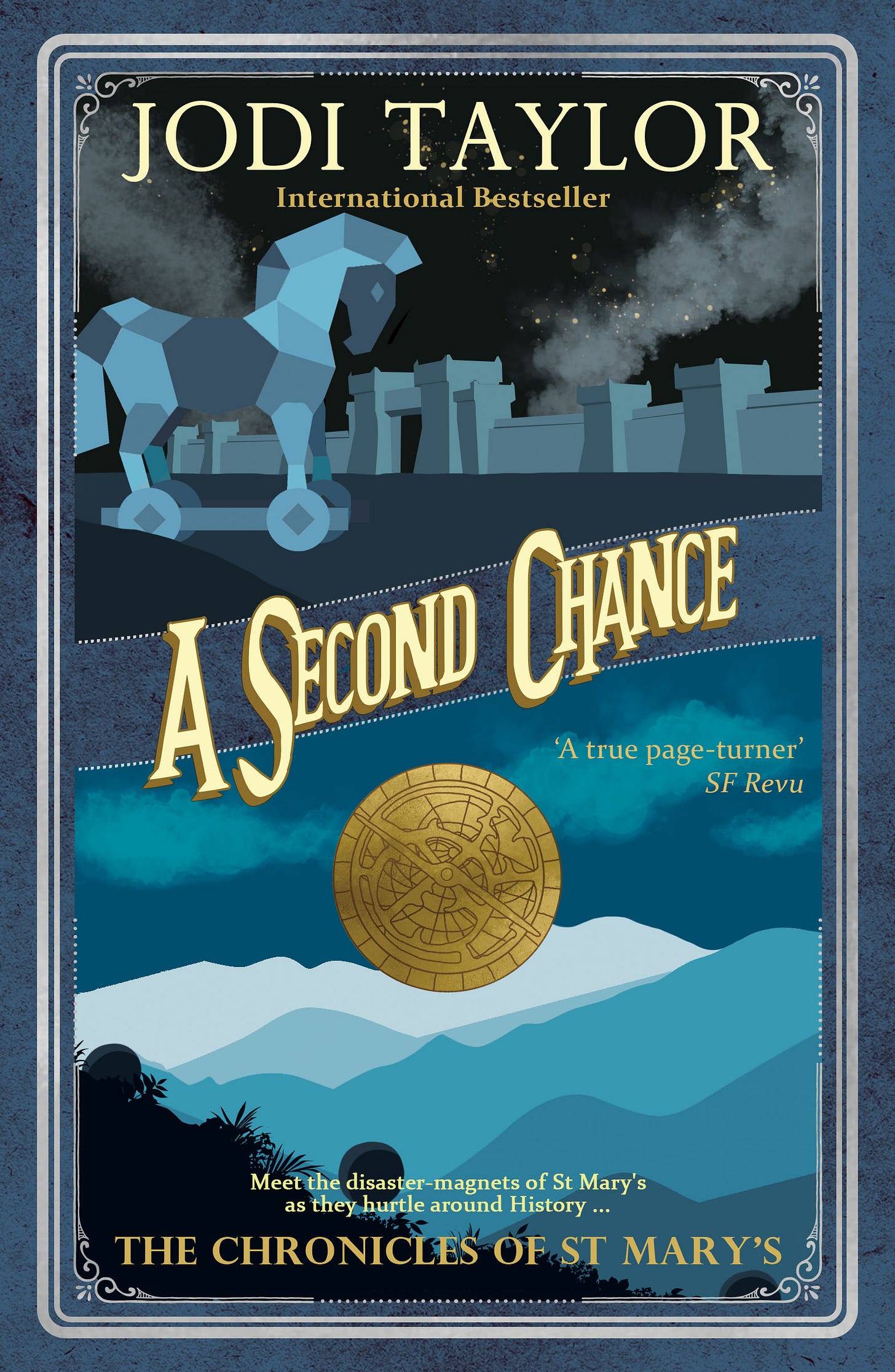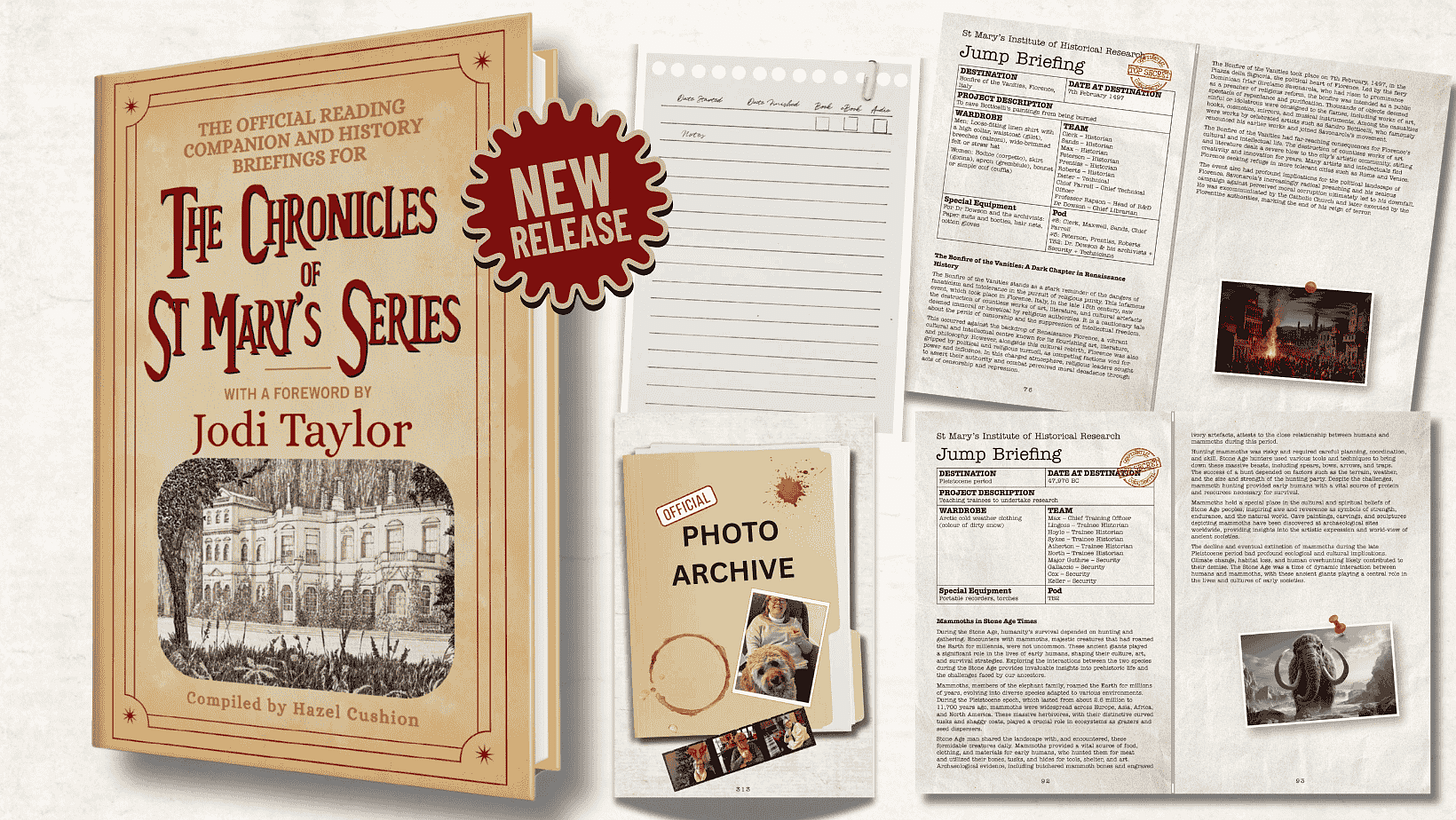The Battle of Agincourt, 25 October 1415
Featured in A Second Chance by Jodi Taylor
On 25 October 1415, St Crispin’s Day, King Henry V of England led a weary, outnumbered army to one of the most extraordinary victories in English history. The Battle of Agincourt, fought in northern France during the Hundred Years’ War, became a defining moment in the medieval struggle between England and France and an enduring symbol of courage against overwhelming odds.
Henry’s campaign had begun with high ambition. Determined to assert his claim to the French throne and revive English fortunes in France, he sailed from Southampton in August 1415 and besieged the port of Harfleur. The victory came at a terrible cost, however, as dysentery tore through his army, leaving thousands dead or unfit for battle. When the weakened English force began its march towards the English-held port of Calais, the French army moved to intercept them.
By the morning of 25 October, Henry found his path blocked near the small village of Agincourt. The ground was heavy with autumn rain, the narrow field flanked by woods on both sides. The French outnumbered the English by at least three to one and were confident of an easy victory. Arrayed before Henry stood heavily armoured knights and nobles, glittering with banners and crests. Facing them was an exhausted English force of around six thousand men, the majority of them longbowmen.
The outcome, however, would confound every expectation. As the French advanced across the sodden field, their cavalry and men-at-arms became bogged down in the deep mud. The English archers, armed with their powerful longbows, rained volleys of arrows into the packed enemy ranks, cutting down horses and men in devastating numbers. When the disorganised French finally reached the English line, they were met by desperate but disciplined resistance.
What followed was a scene of chaos and slaughter. The narrow terrain prevented the French from deploying their superior numbers, and their armour, once an advantage, became a death trap as soldiers fell and suffocated in the mud. Henry himself fought in the thick of the battle, showing the cool leadership and personal bravery that would define his legend. By the day’s end, thousands of French soldiers, including much of their nobility, lay dead. English losses were remarkably light.
The victory at Agincourt stunned Europe. It restored England’s sense of national pride and established Henry V as one of the greatest warrior kings in history. His triumph, however, did not bring lasting peace. The Hundred Years’ War would continue for decades, with fortunes shifting back and forth until England’s eventual expulsion from France in the mid-fifteenth century.
Agincourt’s place in cultural memory owes much to William Shakespeare, who more than a century later transformed the battle into one of the most stirring moments in English literature. In his play Henry V, Shakespeare’s imagined king delivers the rousing St Crispin’s Day speech, calling his soldiers “we few, we happy few, we band of brothers.” Those words captured the spirit of unity, courage, and endurance that the real battle seemed to embody.
More than six hundred years later, the Battle of Agincourt still resonates as a story of impossible triumph. It is remembered not only as a military victory but as a moment when the determination of ordinary men, under extraordinary leadership, changed the course of history and entered forever into legend.
Max’s jump to the Battle of Agincourt had an enormous impact on her life. Read more about this in “A Second Chance” by Jodi Taylor. It’s available in paperback, eBook and audiobook formats.
Have you discovered The Official Reading Companion and History Briefings for The Chronicles of St Mary’s series by Jodi Taylor?
If you’ve ever found yourself wondering who did what, when, and where in Jodi Taylor’s brilliant Chronicles of St Mary’s series — this is the companion guide you’ve been waiting for.
This guide is a must-have for both dedicated fans and curious newcomers. It contains synopses of every book and short story, detailed floor plans of St Mary’s Institute for Historical Research, History Briefings, chronological jump lists, character information, and more.
Whether you’re brushing up on the timeline or want to immerse yourself further in the chaos and charm of St Mary’s, this guide is your ultimate companion.
CLICK HERE to learn more.
I hope you have enjoyed this foray into history. Please subscribe to read more articles like this.
CLICK HERE to read more History and Happenings articles.




